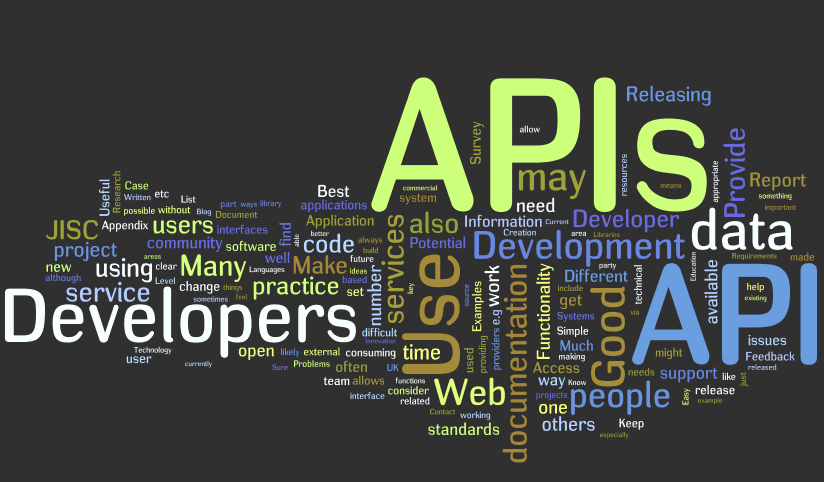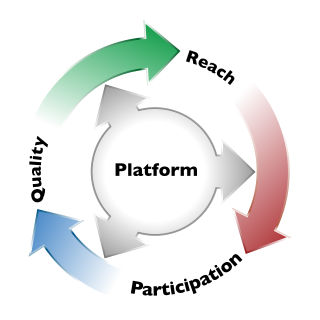 There are many examples where Intelligent Things embrace open innovation paths and collaborative design approach.
There are many examples where Intelligent Things embrace open innovation paths and collaborative design approach.
One might actually ask: does Intelligent Thing have Social Innovation in its DNA, and what are the reasons for this relationship? How can we make Intelligent Things become clever by operating socially?
What are Intelligent Things?
“Intelligent Things are objects which “become” intelligent because they connect to the Internet” according to Netexplo conference related to the world of Intelligent Things. One also talks about “extending objects by Internet connection“ . Extension means a various set of actions enhancing the object: hacking, gluing, watching through sensors like cameras, …
Extensions of pre-existing objects can mean “revisiting the object” like in the case of the “communicating tire” by Michelin or designing connected household appliance by SEB. Original creations involve designing specific Internet objects that will communicate, collect and display knowledge, entertain, collaborate, …
Sensors are an essential piece to change inert objects into Intelligent Things as they collect user data and transfer them to the Internet. Rafi Haladjian, a forerunner in creating Intelligent Things with his Nabaztag rabbit, distinguishes various ranges of sensors: “infrastructure, smart phone, enhanced device, neo objects, add-on like RFID tag, and DIY (do it yourself)”. “To bring a connected object to success, you need to lower the necessary motivation for the user to put in data”, insists Rafi Haladjian: “The less motivation is required from the user, the better the data collection will be“.
By collecting data through sensors, and their multiplying number (5 billions now, 20 billions in 2020), Intelligent things lead to the “area of big data“, and the concept of “web squared“.
Intelligent Things crossing Social Innovation
Many examples show the crossing between Intelligent Things and Social Innovation:
- Vlad Trifa renames “the Internet of Things” in “the Web of Things“; Web of things encompasses social web, real-time, programmable, semantic web, and physical Internet devices. Buying a connected object links me to an online community: he draws the concept of a “Facebook of objects”.
- Usman Haque is promoting Pachube, an online database enabling developers to create sensors and apps. Pachube empowers communities of connected people, by sharing real time data from captors, and increasing interactions. Usman Haque stressed on a generous direction: “Let others make value out of your data, and provide you in return with input which will let you make sense of your environment, understand, measure, and challenge standard”.
- Open street map lets you share your GPS data, thus creating and providing free geographic data and mapping to anyone who wants it.
- Ricardo Ferreira has designed a connected urban community with Living Plan IT, and also a place for “innovating in a living co-laboratory, a proving ground for the many Place Apps developed on the Urban Operating System™ by its partners”.
- Moreover, Smart City or City 2.0 can be viewed as a collaborative city, a city that is progressing along with his citizen, with digital tools …or not” (Urbanisme 2.0); Inhabitants become co-designers, creating value on top of data provided by the city sensors. New-York BigApp Challenges rewards the best urban applications processing public data, and designed by city inhabitants. Far from being a place of constant monitoring, Connected City 2.0 is a city that can be hacked, restoring and making available to its residents the data captured through sensors, surveillance cameras, thermometers, Wi-Fi networks, 3G antennas, mobile phones, satellites, chips, NFC devices, public screens, QR-Codes,…
Furthermore, recent initiatives like Readymate.com or Mamadeleine.com offer a design platform for users to create their personal Intelligent Thing, connect an existing personal object, or hack a connected object..
In short, Intelligent Things become clever when they operate socially and entice collective intelligence, capturing data from various individual sources to compile them, and display the results back to the community which is able to develop additional applications processing the data.
Drivers
The link between Intelligent Things and Social Innovation is no accident. There are strong drivers to involve Social Innovation when designing Intelligent Things, both from the consumer demand and the technology offering perspectives:
Technology push is present in the fact that Intelligent Things, using sensors and being connected, produce a continuous flow of data that can be easily made available to the community of developers, and which are sources of additional services ideas. Thus, Withing bodyscale capture data like weight, frequency and time of use, user gender and age, … and display them through dedicated API
User pull embrace various consumer trends:
- “I want data dashboard to monitor my personal knowledge (to know myself better, “Quantifyself” trend);
- “I want to facilitate my daily life through data signals or alerts, I want to customize and extend the service;
- I want to share data with others (anonymously), so that transversal projects or services can be built on top of it by others”.
For the user, it’s about control, enhancement, and openness.
In the case of Withing bodyscale, one can imagine the 3 steps as follows: 1)control his weight, 2)get balanced diet suggestions, 3)benefit from unexpected services like an app displaying my personal calendar on the body scale.
Curiosity and surprise can sometimes appear in the first phase: thus, one body scale owner found it hard to understand why his frequency of usage was so high, until he realized his maid was using the bodyscale as well!
Most of Intelligent Things have an intrinsic interest in the fact that they produce data of proximity, providing insights on our daily life, understood by average citizen: they are sources of creative sparks for developers to better everyday life.
API Business models
If Connected Objects have a sales model as their basic business model, additional applications created by community of developers enhance their attractiveness and foster user loyalty, just like the App Store brings the iPhone to another value level.
Intelligent Things can then build marketplace for applications and get commissioning revenues; they can monetize roughly the data they produce or leverage on APIs to increase their presence and branding: to expose Intelligent Things data, APIs turn to be the most efficient and collaborative platform.
As stated in Apigee.com, API business models enclose:
- APIs as a marketing tool, letting developers write applications based on your API and increase your audience and traffic;
- APIs as distribution channel for your data: some valuable content or data drive advertising business model, leveraging on audience qualification.
- APIs are a cheaper and faster way to build access applications to cover every access platform (Android, iOS), and extend your presence on social networks (Facebook, Tweeter…) much faster than your team might.
- APIs to distribute additional services: your API could be either free because it’s part of the existing subscription (a great way to differentiate service from competitors) or as an ‘add-on’ service for incremental revenue. Add-on API can be presented on your own service web site or through API market places (“supermarché d’APIs”).
- APIs to let third-parties extend your product: by opening APIs you might create an ecosystem of partners and developers that augment your core offering with specialized solutions and innovative ideas.
The business case of Open Data shows that opening freely data to developers, and unleashing creativity for applications, might create more value than monetizing data flow to developers.
For Intelligent Things, the challenge becomes twofold: design an end-user product with a great customer experience at an attractive price, and shape a purposeful platform (APIs, SDK Software Development Kit, Data Visualization) that will attract developers and third party contributors to build a wide range of applications.
Intelligent Things share data with social innovation community, and the community turns back value to them. These two objectives are bundled: the audience that developers will be able to reach through the platform becomes an important attractiveness factor.
Limitations
Despite the undeniable potential of data opening and APIs business models, some constraints still limit its development:
-
Low awareness of the concept of ‘Open Data’ involving the need of substantial explanation work internally.
-
Fears associated with confidentiality (“Big Brother” fear)
-
Technical difficulties regarding data availability: versatile formats, disparate sources, necessary adaptation of information systems …
-
Legal frameworks: it is mandatory to identify the legal framework for the data owner and the usage rights it grants.
The case of personal information can be especially sensitive: recording, storage and use of personal data are strictly controlled (at least in France) by the Data Protection Act of 1978 under the responsibility of the CNIL. In particular, the law states that “Information cannot be reused in a manner which is not consistent with the purpose for which it was collected”.
The service designer has to be particularly vigilant with this regard insofar as the aggregation of data, including personal data, could lead to use this information for purposes far away from the original objectives.
Creating the API virtuous circle
The main Key Success Factors to create value based on data generated by Intelligent Things can be sum up along two axes: build a functional API and create an attractive platform.
- To be successful in API design, one needs to make an appropriate exposure of the API. “With good APIs, there should be no need to scrape the web or wait for lengthy processes to complete (unless there’s some serious data mangling going on). Good APIs offer their responses in a multitude of data formats, not least JSON and XML” explains Adam, master of TV hack day event.
- The second axe is a platform that will help others to design, staging the API, developing use case and accurate documentation: “Good APIs have documentation freely available on the web. Good APIs have software libraries that allow for even easier access to the information delivered through the API.” It is essential to let developers figure out what the API can lead to through data visualization and API “storytelling” as it will help build a common belief between developers, designers, and marketers, all participants to the innovation process. Then the platform shall be promoted, by informing user, and by communicating around this platform.
Finding the successful mixture in one shot is hard, thus many iterations of this process are needed. The goal is to design an API that will help and motivate developers. It starts with a quick model or small tests on micro communities; incentives can help initiate the involvement.
These two KSF can be distinctly addressed, and we have to think in both ways. Nevertheless, the common goal is to create a positive ecosystem. If the platform is attractive, many developers will use it, and thanks to them they will improve the API. Reciprocally, if the API is well-thought and easy to use, developers will want to use it and make the platform attractive.






13 Comments